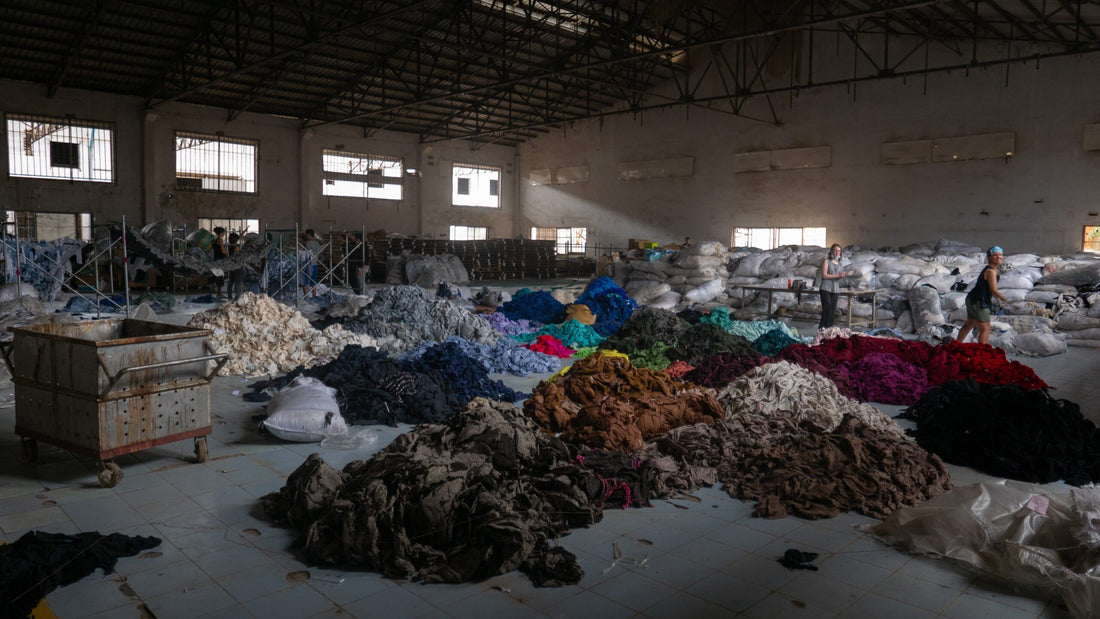The Hidden Cost of Fashion: Environmental Impact and the Path to Sustainable Choices
Introduction
In the glittering world of fashion, where trends come and go, there's an often-overlooked story, one that's hidden behind the glamour of the runway—the environmental impact of the fashion industry. The numbers are staggering: approximately 500,000 tons of microfibers, equivalent to 50 billion plastic bottles, find their way into the ocean each year, all from the simple act of washing clothes. If that isn't alarming enough, consider this: every second, a garbage truck's worth of discarded clothing is either burned or sent to a landfill.
The Fashion Industry's Environmental Footprint: A Stark Reality
The fashion industry's impact on the environment is undeniable, and these numbers tell a sobering tale. The allure of fast fashion, driven by the desire for ever-changing styles at affordable prices, has resulted in a throwaway culture that is wreaking havoc on our planet.
"True style isn't about wearing something new every day; it's about making the right choices for the planet and your wardrobe." — Anonymous
The Role of Microfibers: Tiny Particles, Colossal Impact
Microfibers, those minuscule threads released from our clothing when we launder them, are a major contributor to ocean pollution. These tiny particles are often made from synthetic materials like polyester, viscose, and rayon, and they pose a significant threat to marine life and ecosystems.
Environmental Expert Insight: "The scale of microfiber pollution is alarming. These fibers are ingested by marine organisms, making their way up the food chain and potentially onto our plates. It's a vicious cycle that must be broken." — Dr. Sarah Mitchell, Environmental Scientist
The Disposal Dilemma: Mountains of Discarded Clothing
The fashion industry's love affair with fast fashion has created a massive problem of disposal. Clothes, often made from synthetic materials, end up in landfills, where they can take centuries to decompose. Some are incinerated, releasing harmful toxins into the air.
"Our closets should tell a story of timeless pieces, not disposable fashion. Quality over quantity is the new mantra." — Stella Green, Sustainable Fashion Advocate
The Solution: A Shift Towards Sustainable Choices
Amidst this daunting scenario, there's hope on the horizon—a growing movement towards sustainable fashion. Sustainable choices can significantly minimize the fashion industry's environmental impact.
Natural Textiles: The Earth's Gift to Fashion
"In the embrace of natural textiles, we find harmony with the Earth. Cotton, linen, jute, hemp, and bamboo—these are not just fabrics; they're a promise of sustainable fashion."
Natural textiles are at the forefront of sustainable fashion. Cotton, linen, jute, hemp, and bamboo are nature's gifts, providing materials that are not only eco-friendly but also comfortable, breathable, and versatile.
Environmental Expert Insight: "Natural textiles are a win-win. They're biodegradable, renewable, and gentle on the planet. Plus, they offer style and comfort that rival any synthetic material." — Dr. Emily Clark, Environmental Scientist
Melvin Jones: Leading the Charge for Sustainable Fashion
At Melvin Jones, we've taken up the mantle of sustainable fashion with a deep sense of responsibility. We're dedicated to changing stereotypes that equate fashion with synthetic materials. Our collections are crafted from the finest natural textiles like "Supima" cotton, linen, and bamboo.
Fashionista Wisdom: "Sustainable fashion isn't a compromise; it's an upgrade. It's about choosing garments that not only look good but also feel good for the planet." — Alex Turner, Fashion Blogger
The Power of Eco-Conscious Choices
Every choice we make, from the clothes we wear to the materials we select, has an impact. It's time to make choices that are kinder to the environment. Here's how we can minimize our fashion footprint:
- Natural Textiles: Embrace the elegance and comfort of natural textiles. Cotton, linen, and bamboo offer a wealth of options for stylish and sustainable clothing.
- Reduce, Reuse, Recycle: Follow the mantra of reducing waste by choosing quality over quantity. Reuse your clothing creatively, and support recycling initiatives.
- Eco-Friendly Brands: Support brands like Melvin Jones that are committed to sustainable fashion and transparent production processes.
- Educate and Advocate: Educate yourself and others about the environmental impact of fashion. Advocate for responsible practices within the industry.
Conclusion: A Fashionable Future with a Green Heart
In the world of fashion, style should not come at the expense of our planet. The environmental challenges posed by the fashion industry are real, but so are the solutions. It's time to make a choice—a choice for sustainable, eco-conscious fashion that not only enhances our personal style but also nurtures the Earth.
"In every stitch of sustainable fashion, we weave a promise to the planet. Let's create a fashionable future with a green heart."
As we tread this path towards sustainable fashion, let's remember that the choices we make today will shape the world we pass on to the next generation. With brands like Melvin Jones leading the way, we can confidently stride into a future where fashion is not just beautiful but also beautifully sustainable.

